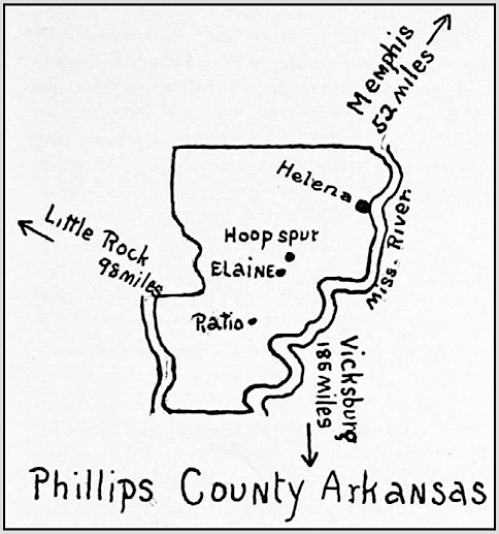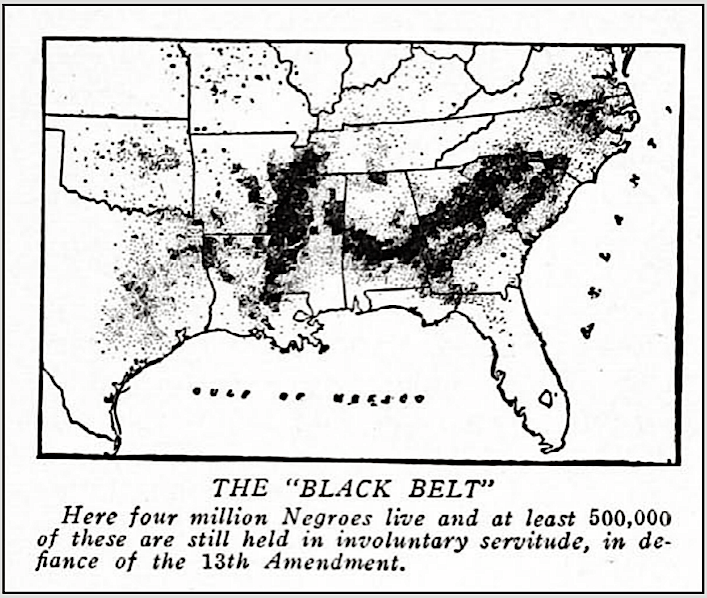 ———-
———-
Hellraisers Journal – Tuesday December 9, 1919
Phillips County, Arkansas – White Men Plot Mass Murder in Defense of Peonage
From The Crisis of December 1919:
ARKANSAS
[-The Cause of the “Race Riot,” Part I of II]
While the white men were meeting secretly and discussing means of “nipping the niggers in the bud,” matters came to a head very suddenly in an unexpected way. On Sunday, before the riot, John Clem, a white man, from Helena, came to Elaine loaded up and drunk on “white mule.” He proceeded to bully and terrorize the whole Negro population of over four hundred people by continuous gun play. The Negroes, to avoid trouble, got off the streets, and phoned to the sheriff at Helena. He failed to act. Monday, Clem was still on a rampage. The Negroes avoided trouble, because they feared that his acts were a part of a plan to start a race riot.
Tuesday, some Negroes were holding a meeting [of the Progressive Farmers and Household Union of America] in a church at Hoop Spur. A deputy sheriff and a “special agent,” white, and a Negro trusty came by in an auto. The white men stopped and proceeded to “investigate” the meeting. They were refused admittance. They attempted to break in and fired into the building. Some Negroes returned the fire, killing the special agent and wounding the deputy sheriff, so it is said. However, when the Negro trusty reported the shooting, he said that they had been fired upon from ambush by two white men and a Negro. The wounded deputy also first reported that the party had been fired upon from ambush by two white men and he was quite sure he saw a Negro running from the scene. Later all mention of the white men was carefully avoided and suppressed, and the entire blame was laid upon the Negroes at the church and it was charged that all of them were armed, that the white men were proceeding peaceably on the road and only got out to fix their car, which just happened to break down right in front of this particular church, and that the Negroes fired on them without any provocation whatever. Later another white man was fired on, and it was claimed that he just happened to be coming along the road an hour later and was shot by Negroes who were at the same church.
It never seemed for a moment unreasonable to the white men to believe that the Negroes would kill and wound white men at the church and then deliberately stay there for an hour or two longer for the purpose of killing another white man. Every sane man knows that those Negroes would have fled from the scene after the first shooting, if they had been guilty.
Anyhow, the hue and cry was raised. “Negro uprising,” “Negro insurrection,” etc., was sent broadcast.The white planters called their gangs together and a big “nigger hunt” began. They rushed their women and children to Helena by auto and train. Train loads and auto loads of white men, armed to the teeth, came from Marianna and Forrest City, Ark., Memphis, Tenn., and Clarksdale, Miss. Rifles and ammunition were rushed in. The woods were scoured, Negro homes shot into, Negroes who did not know any trouble was brewing were shot and killed on the highways.


